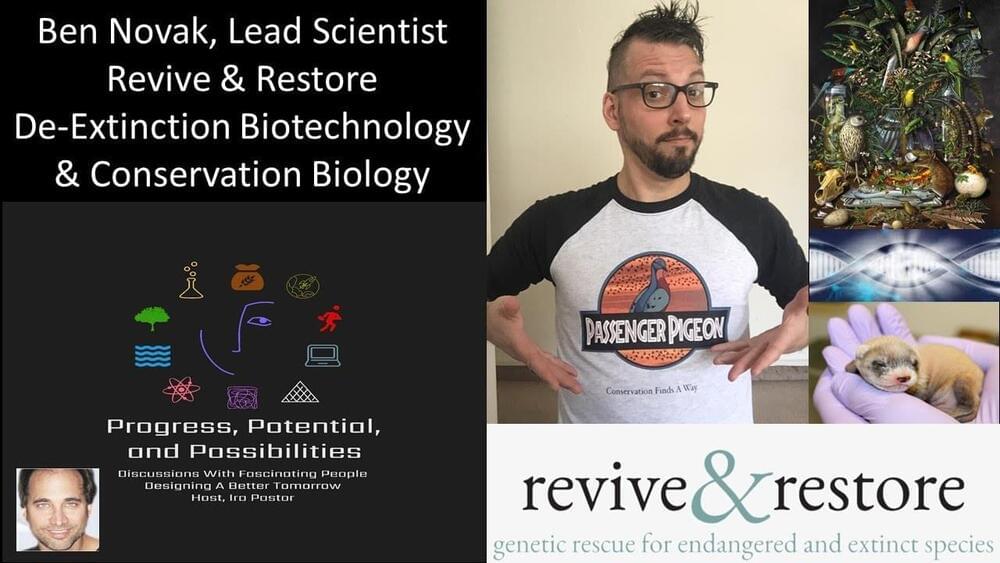“De-Extinction” Biotechnology & Conservation Biology — Ben Novak, Lead Scientist Revive & Restore
Ben Novak is Lead Scientist, at Revive & Restore (https://reviverestore.org/), a California-based non-profit that works to bring biotechnology to conservation biology with the mission to enhance biodiversity through the genetic rescue of endangered and extinct animals (https://reviverestore.org/what-we-do/ted-talk/).
Ben collaboratively pioneers new tools for genetic rescue and de-extinction, helps shape the genetic rescue efforts of Revive & Restore, and leads its flagship project, The Great Passenger Pigeon Comeback, working with collaborators and partners to restore the ecology of the Passenger Pigeon to the eastern North American forests. Ben uses his training in ecology and ancient-DNA lab work to contribute, hands-on, to the sequencing of the extinct Passenger Pigeon genome and to study important aspects of its natural history (https://www.youtube.com/watch?v=pK2UlLsHkus&t=1s).
Ben’s mission in leading the Great Passenger Pigeon Comeback is to set the standard for de-extinction protocols and considerations in the lab and field. His 2018 review article, “De-extinction,” in the journal Genes, helped to define this new term. More recently, his treatment, “Building Ethical De-Extinction Programs—Considerations of Animal Welfare in Genetic Rescue” was published in December 2019 in The Routledge Handbook of Animal Ethics: 1st Edition.
Ben’s work at Revive & Restore also includes extensive education and outreach, the co-convening of seminal workshops, and helping to develop the Avian and Black-footed Ferret Genetic Rescue programs included in the Revive & Restore Catalyst Science Fund.
Ben graduated from Montana State University studying Ecology and Evolution. He later trained in Paleogenomics at the McMaster University Ancient DNA Centre in Ontario. This is where he began his study of passenger pigeon DNA, which then contributed to his Master’s thesis in Ecology and Evolutionary Biology at the University of California Santa Cruz. This work also formed the foundational science for de-extinction.
Ben also worked at the Australian Animal Health Laboratory–CSIRO (Commonwealth Scientific and Industrial Research Organisation) to advance genetic engineering protocols for the pigeon.

I watched the video of your presentation on restoration of the passenger pigeon and forests with interest. I am a forest landowner in eastern Virginia and your response to the question of would passenger pigeons become a nuisance struck me as very superficial as the impacts would be tremendous on agriculture, forestry and ordinary citizens. The landscape, population density, property tax systems and many other things are very, very different in the east than in Montana. One short example- thousands of birds descending on a ripe wheat field would devastate that field, leaving the farmer with no crop and the landowner unable to receive rent if they weren’t also the farmer. In my case about 10% of my land is agricultural and I rent that to a neighboring farmer. That pays my property taxes. If that income was gone or significantly reduced, I would be forced to significantly increase forestry harvest and instead of a mixed pine/hardwood forest, I’d have to convert it all to pine plantation to generate short term income- thus reducing diversity. While I’d love to see reintroduction of passenger pigeons, it is a much, much different world than in 1905 and the societal impacts are potentially significant and not to be glossed over.